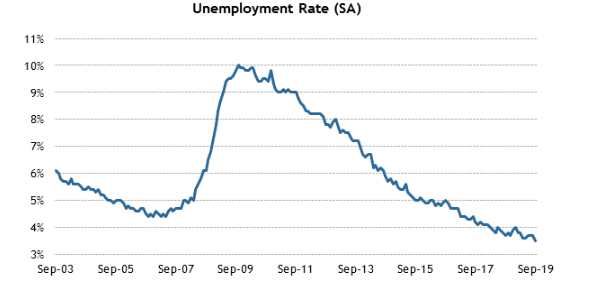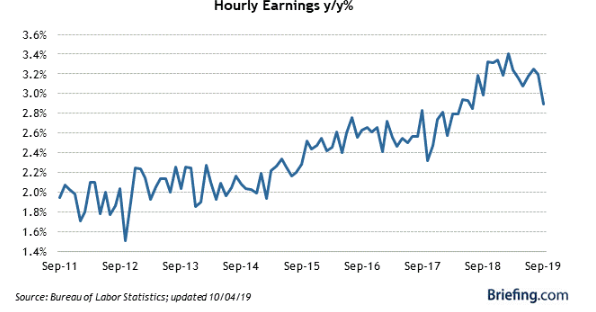The US Unemployment Rate Fell To A 50-Year Low In September
The September job creation numbers have provided some support for the view that the US labor market is still quite healthy and is continuing to create jobs at a healthy clip.
In September nonfarm payrolls rose by 136,000 compared to 168,000 in August, and job gains have averaged 157,000 per month over the past three months.
The labor force survey of households in September provides an evens stronger confirmation of a healthy job market. According to this survey, 391,000 new jobs were created in September, and over the past three months, the average gain was 421,000 per month.
It is generally understood that roughly 100,000 new jobs are needed each month to keep up with growth in the working-age population, and to roughly sustain a balanced labor market.
In fact, the unemployment rate dropped to 3.5% in September, the lowest American unemployment rate in 50 years. The broader U6 measure of unemployment, which accounts for both unemployed and underemployed workers, declined to 6.9% in September versus 7.2% in August.
Average hourly earnings in September remained unchanged from the previous month’s level, after increasing 0.4% in August. As the accompanying chart illustrates, as of September, average hourly earnings had increased 2.9% over the past year compared with a higher 3.2% for the 12 months ending in August.
So, even though a healthy job creation pace and low unemployment suggest an extremely tight labour market, average hourly earnings have significantly decelerated from an earlier peak of 3.4%.
In other words, the earnings numbers are more consistent with the expectation of slower US growth ahead, while the employment numbers suggest that the slowdown may not be too significant.
Indeed, the latest industry employment data suggest that the trade tensions which have clearly hurt manufacturing output and employment may be spilling over to the broader labor market. Manufacturing employment barely increased over the past five months, and indeed most of the jobs created recently have been in the service industries.
In other words, the eleven-year economic expansion has also provided a number of labor market warning signs. Wage growth and manufacturing payrolls seem to have stagnated, and the retail and utilities sectors also continue to shed jobs.


Further Data On The Recent US Job Market Performance





